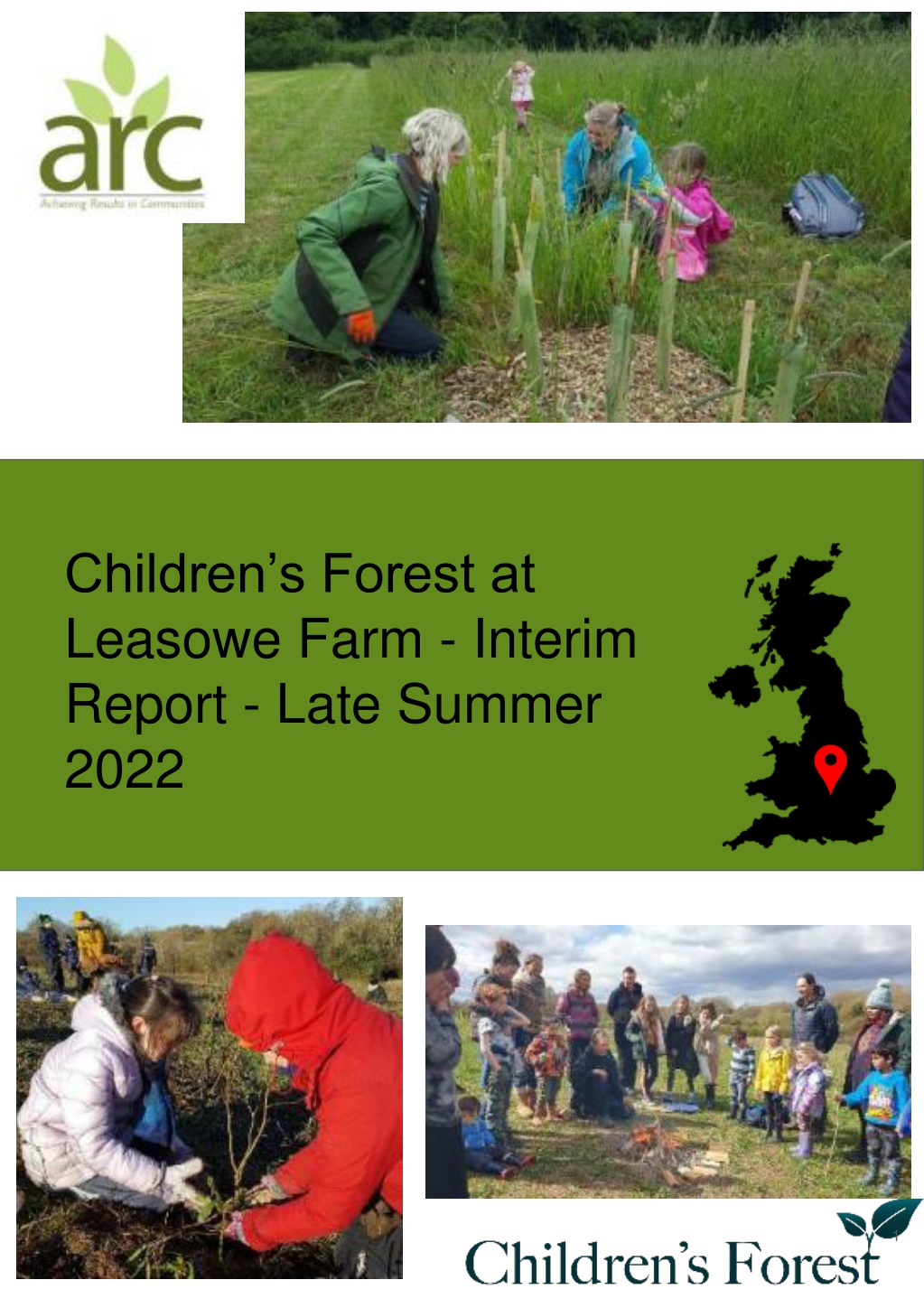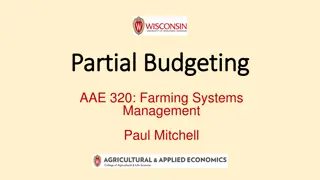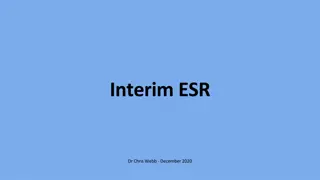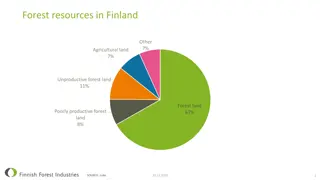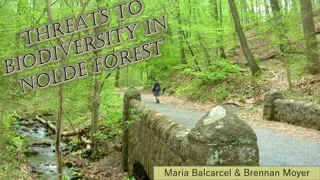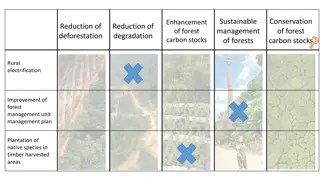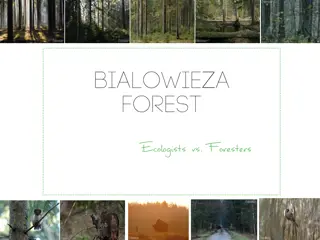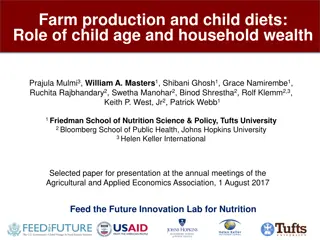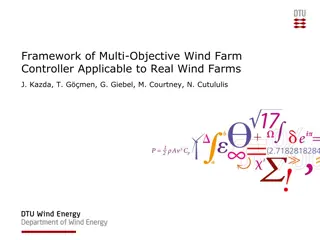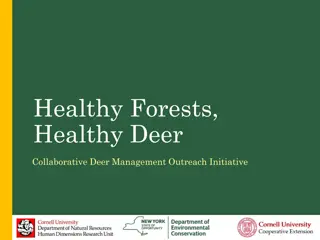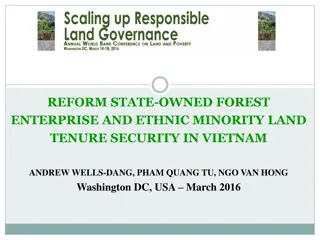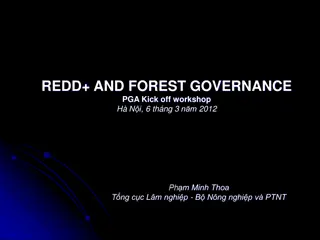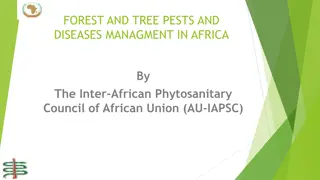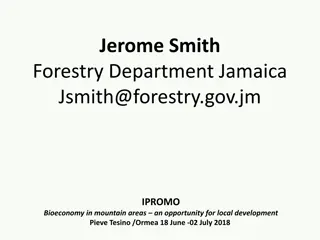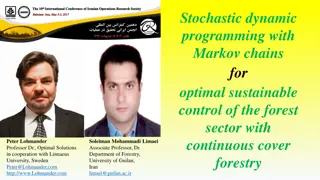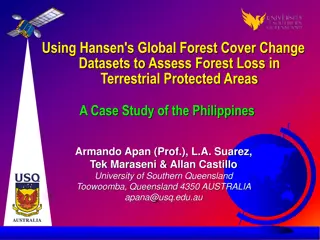Children's Forest at Leasowe Farm - Interim Report Late Summer 2022
ARC CIC received funding to establish a Children's Forest at Leasowe Farm, aiming to connect children and the community with nature, educate on climate change mitigation, and plant 2600 trees by engaging with the community. The project involves a steering group with diverse representation, collaboration with The Woodland Trust for tree planting, and educational visits with local schools. Staff training by the national Children's Forest Project contributes to project success and community well-being.
Download Presentation

Please find below an Image/Link to download the presentation.
The content on the website is provided AS IS for your information and personal use only. It may not be sold, licensed, or shared on other websites without obtaining consent from the author. Download presentation by click this link. If you encounter any issues during the download, it is possible that the publisher has removed the file from their server.
E N D
Presentation Transcript
Childrens Forest at Leasowe Farm - Interim Report - Late Summer 2022 1
In July 2021 ARC (Achieving Results in Communities) CIC received funding from Warwickshire County Council s Green Shoots Climate Resilience Fund to plant a Children s Forest at Leasowe Farm in Radford Semele. The project had an initial 2 year time frame, with a number of aims and intentions: Nurturing a deeper connection to nature by engaging children, families and the wider community in planting, tending and caring for trees. Encourage an understanding of the importance of trees in mitigation against climate change Ensure 2600 trees are growing in a 4 acre field in the Children s Forest at Leasowe Farm 2
The project is underpinned by the Leasowe Land Regeneration Steering Group which was formed in late 2020 made up of - 5 representatives from ARC - 2 members of the Ingall Family (land owners) - 3 other passionate members of the community It has been vital to the success of this project that there is a mix of representatives informing decision making along the way. Currently the group is an informal Steering Group with the future intention of becoming formalised/constituted 3
Achieving Results in Communities (ARC) are a local community organisation that has been working for over 10 years to enhance access to, and management of, the natural environment to benefit the physical and mental health and wellbeing of local people. In October 2021, 3 ARC staff members attended a 2 day training weekend led by the national Children s Forest Project based in Sussex. They were able to bring their learning and experience back to colleagues in Warwick District to plan and deliver the Children s Forest at Leasowe Farm 4
A representative from The Woodland Trust visited the planting field recommended the mix of trees most suitable for the land and surrounding environment. 1800 trees were received from the Woodland Trust to plant during winter 2021/22. The field was planned and marked out with bamboo canes/ tree stakes Tree mix for Y1: Hazel - 200, Hawthorn - 300, Spindle -100, Dogwood -100, Crab Apple - 75, Rowan - 50, Field Maple - 75, Blackthorn - 125, Holly - 75 Alder - 50, Silver Birch - 100, Hornbeam - 100, Sweet Chestnut - 50, Scots Pine - 100, Wild Cherry - 100, Bird Cherry - 50, Oak - 150. They were heeled into trenches for winter to be kept safely between planting sessions 5
In late November/early December the first visits to the Children s Forest took place with Year 5 children from Radford Semele Primary School. This was followed by Clapham Terrace and Shrubland Street Primary Schools in Feb/March 2022 These 3 primary schools were chosen because of their proximity to the farm (Radford Children were able to walk to the farm) and because Clapham Tce and Shrubland St are both small urban schools in Leamington with very little natural outdoor space. 6
The Childrens Forest methodology is a four step journey that supports a meaningful connection to tree planting and the existing ecosystem; that activates future generational thinking and supports children to take hopeful action in the face of climate change. Step 1 Experiencing: By engaging in embodied experience in woodlands through Forest School, we support Children to develop genuine care and personal relationship with the natural world. 7
Step 2 Imagining: Their time in the woods enables the children to look out over the land and imagine future forests. Through the creative arts, they engage with the vision of woodland that they will plant. The children sang songs, painted rocks and trees They collaborated in a class poem and took part in a storytelling activity 8
Step 3 Planting: As they planted the trees, the children wrote their wishes for the future generations on leaves which they placed alongside their trees that these woods will never be cut down that all animals will have a home, that we will all have clean water to drink . The Children also learnt about the characteristics, uses and tree lore of the species they were planting - such as Hazel - tree of knowledge or Oak - tree of strength 9
Step 4: Tending: A very important step in the Children's Forest and for the trees - the children returned to the woodland to care for the trees by mulching, watering and weeding. In this way they are tending to their connection to the land as well as the trees themselves. The trees were planted around a central Children s Fire. There the children will continue to gather in years to come. 10
Some words from the childrens experience. We got to find out that nature is amazing and you don't need electronics to have fun . I'm grateful that I've learned how incredible nature is . It was really nice to be free outside I found today was calm and peaceful I am grateful to be here in the fresh, clean air I like that we were not rushed here and could take time to enjoy things 11
Throughout January - March 2022 ARC and the Steering Group continued community planting days with families from the local area attending to learn about the Children s Forest and to plant the rest of the 1800 trees. Other groups included students from Warwickshire College, a Home Education Groups, Friendship groups, Ahmadiyyah Muslim Association members, Clean Air for Warwickshire Members, Leamington and Warwick Good Gym and over 300 local individuals and families. 12
A monthly newsletter with updates was sent out by ARC and between April and August groups and individuals have returned for tending visits to mulch water and weed around the trees on organised Community Tending Days . 13
The trees have all been planted within the field and in a hedge creating a division between the Children s Forest and the adjacent Canalside Community Farm. Along with the trees from the Woodland Trust, others have been donated to the project making around 2000 trees planted in Year 1! 14
I am still buzzing about the whole experience, I can't thank you enough for including our school in such an amazing project. Year 5 have had the best few days and the parents are so grateful too. They have completed a fact file about their animals and written thank you cards. Julia Finn, Forest School Teacher, Radford Semele Primary School Tom and I have lived on this land for around 20 years and we hope to be here for a lot longer. Together with our children, we will watch and protect these trees as they grow. We are so pleased to see all your lovely smiling faces enjoying the Children s Forest today . Caz Ingall, Guardian Landowner 15
The summer of 2022 was extremely hot, dry with very little rain and temperatures regularly over 30 degrees. Thankfully most of the trees survived - regular watering by volunteers and the mulch around the base of each tree appears to have helped keep moisture in. Most varieties of trees have survived and grown well - with the exception of Alder. Out of the 50 that were planted, less than half survived. Scots Pine also seems to have struggled. We will take lessons learnt forward into next year s planting season and future choice of tree varieties. 16
Thank you! For further details about this project please contact Achieving Results in Communities (ARC): Childrensforest@arccic.co.uk visit our website: www.arccic.co.uk/childrensforest 17
